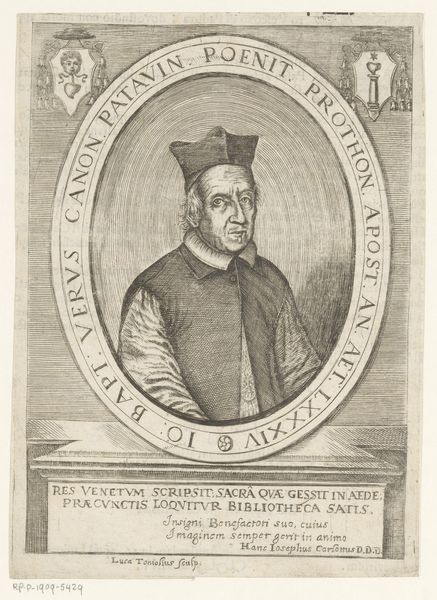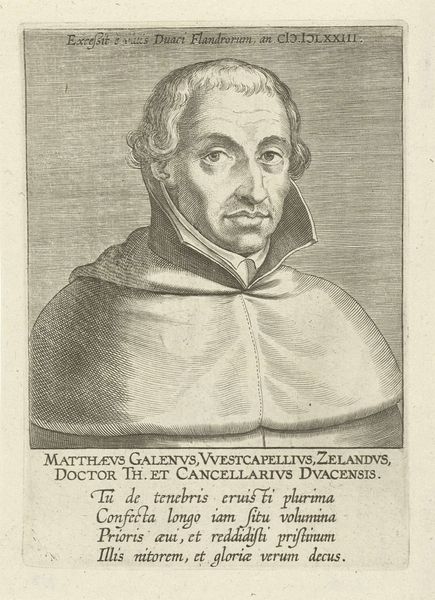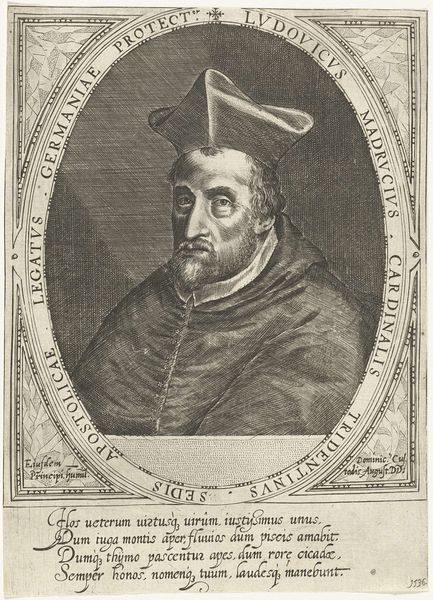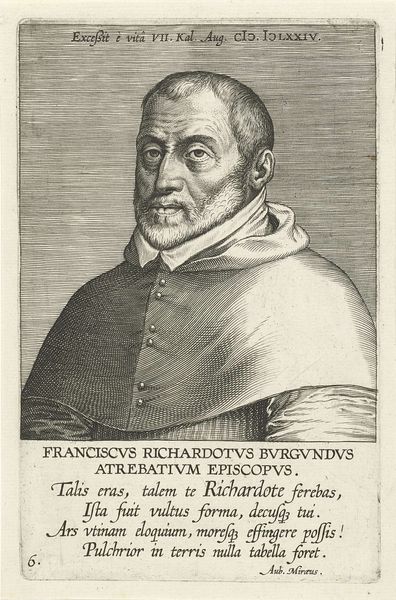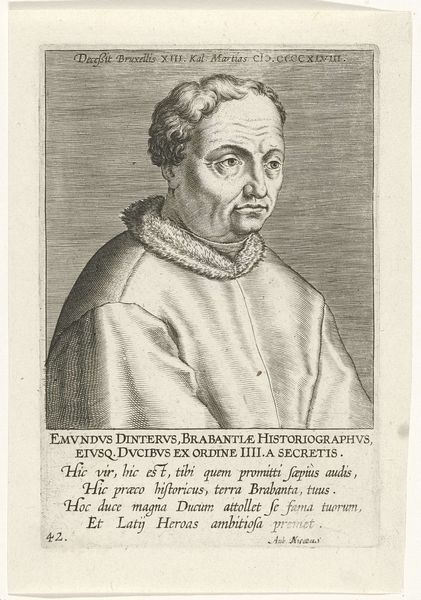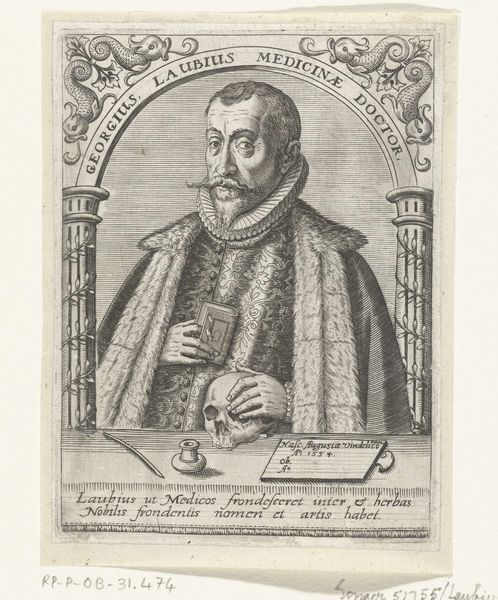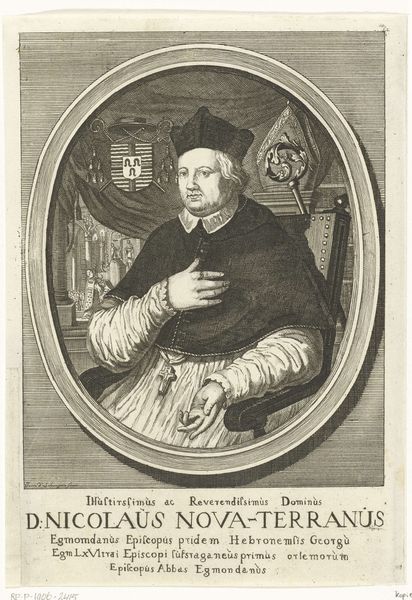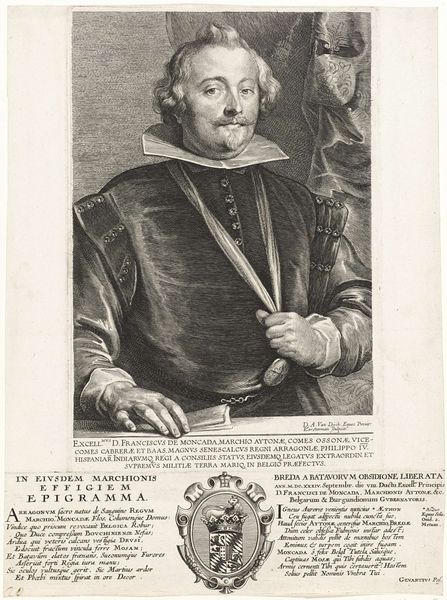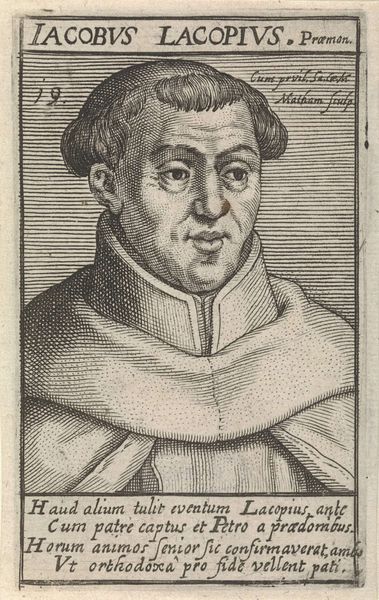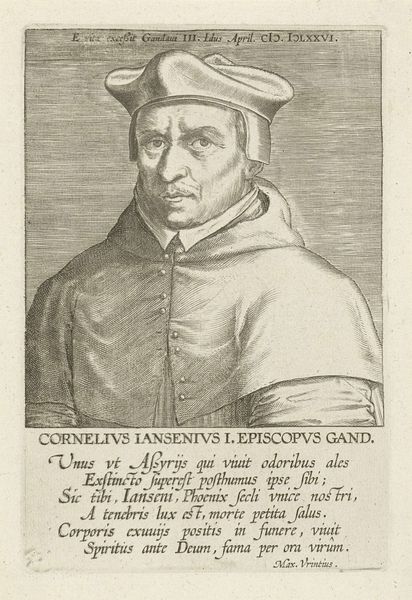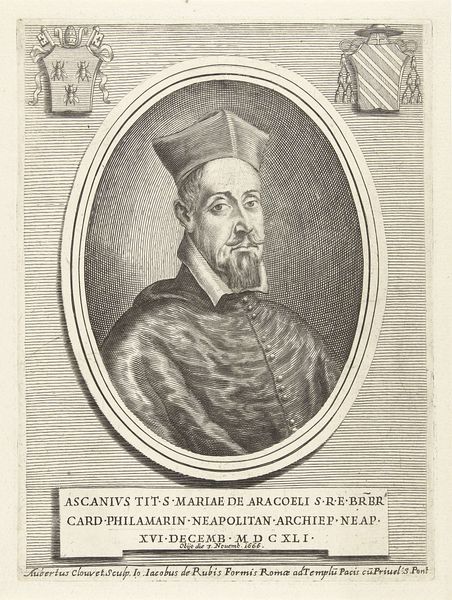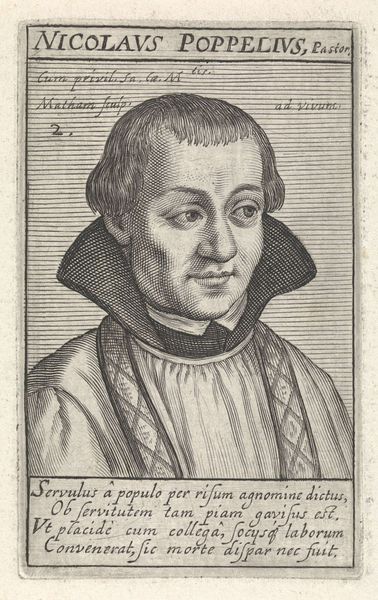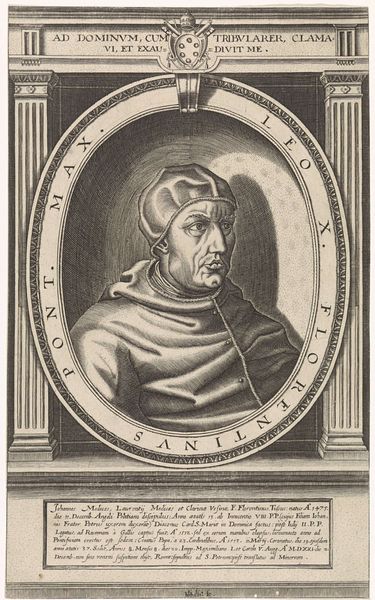
print, engraving
#
portrait
#
baroque
# print
#
old engraving style
#
history-painting
#
engraving
Dimensions: height 175 mm, width 108 mm
Copyright: Rijks Museum: Open Domain
Philips Galle made this print of Martinus Rythovius, Bishop of Ypres, sometime before 1612. It’s made using the intaglio process of engraving, where the image is incised into a metal plate. Consider the work involved. First the design has to be carefully drawn, before using a tool called a burin to carve lines into the copper. The plate is then inked, and the surface wiped clean, leaving ink only in the engraved lines. Finally, it’s pressed onto paper. You can see the crisp lines of the engraving, and feel the slight impression on the page. Engraving was essential for disseminating images and texts at this time. It’s a skilled practice, requiring patience and precision. But ultimately, it’s a reproductive technique, allowing for the mass production of images. It's fascinating to consider how this portrait embodies both the skill of the artist and the early dynamics of mass communication. It’s more than just a likeness; it’s a product of its time.
Comments
No comments
Be the first to comment and join the conversation on the ultimate creative platform.
